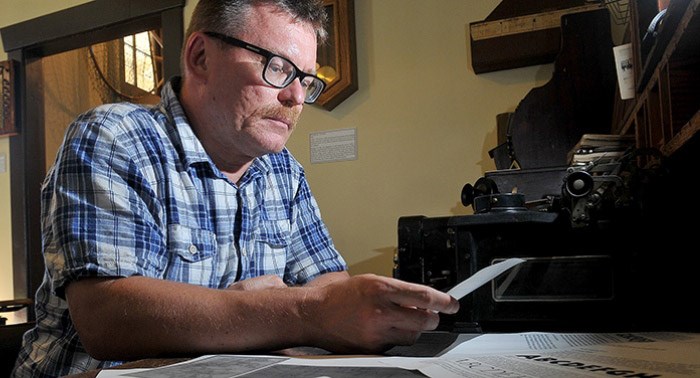There are at least two sides to every war.
But an effort to bring a German perspective to the Port Moody Station Museum’s First World War trench project may prove too expensive.
When Markus Fahrner, the museum’s director, learned of a collection of wartime sketches by renowned German typographer Rudolf Koch, he set out to see if he could bring it to Port Moody.
“It felt really right to get some art from the other side,” Fahrner said. “It creates a bigger picture of the war.”
Koch created more than 20 typefaces as well as designed and illustrated books. He was 39 years old when he enlisted in the German infantry in August 1915 and was sent to Serbia, France and, finally, the Russian front in the fall of 1917.
When Koch put down his rifle, he picked up his sketchbook and produced almost 200 drawings of life in the German trenches, portraits of his fellow soldiers, studies of the natural surroundings around the battlefields. He didn’t record war’s horror, like many other battlefield artists, because, he once wrote, he had to be a soldier rather than just an observer.
Fahrner, a graphic artist himself, contacted the director of the Klingspor Museum, a former type foundry in Offenbach, Germany, that is now a showcase for the art of book production and typography, about the possibility of exhibiting 40 to 50 of Koch’s drawings in conjunction with the PoMo museum's trench project. The drawings had never left the country before.
Contracts were signed and Fahrner began the detailed process of researching Koch and his art to give the exhibit some context.
Fahrner said showing the war’s other side humanizes the experience.
“Not everything is black and white and that’s what this shows you,” Fahrner said. “It becomes a universal struggle.”
But when it came time to arrange transport of the drawings to Port Moody, he encountered a struggle of his own.
The first shipper he’d contracted pulled out because of the value of the drawings, even though Fahrner said they’re insured. Subsequent enquiries led him to another courier that offered to take the assignment for €5,000 (about $7,400 Cdn.) one way — that’s too dear for the small community museum’s limited budget.
Enquiries to the German embassy got Fahrner sympathy but no funding.
The director of the Klingspor Museum, Stefan Soltek, offered to bring the sketches himself but he would have to compensated for his airfare.
With the Koch exhibit scheduled to become part of the trench project beginning later this month and running through December, Fahrner is at loose ends to get it here in time.
“We’re under pressure now,” he said.
If transport can’t be arranged, Fahrner said he may delay the exhibit until next year to give the museum more time to find an economical solution.
“Rather than rushing things, it makes more sense to slow down and rethink,” Fahrner said.
But he remains committed because he believes Koch’s drawings convey an important lesson about war.
“Looking from so far from history, there’s no point in taking sides,” Fahrner said. “We have to start looking at minute details, study all sides.”



